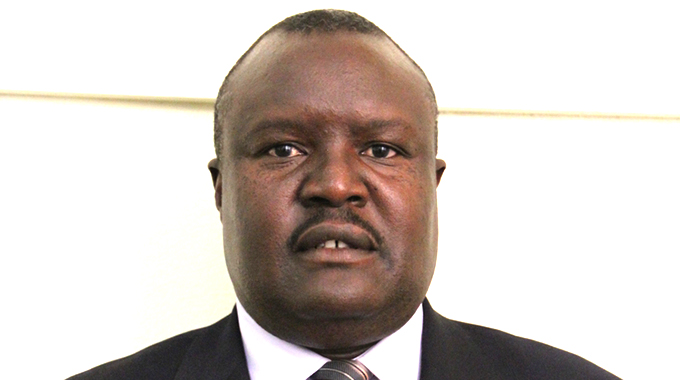World on verge of severe climate-induced famines

Ruth Butaumocho African Agenda
The world has been under siege from devastating effects of climate change that has upended lives of millions of people across the globe in recent months.
News on the effects of climate change continue to take centre stage unabated on most media platforms with extreme weather patterns being recorded across the world.
Extreme weather conditions of varying nature have resulted in loss of lives, displacement of thousands of people and destruction of property running into millions of dollars.
Climate scientists declared the just ended month of July as the world’s hottest month and possibly the warmest in 120 000 years.
While it may still be too early to take stock of the statistics, what is indisputable is extreme weather conditions wreaked havoc across the world resulting in floods, heat waves and extreme cold temperatures the better part of July giving credence to climate scientists claims.
Europe experienced some of the worst extreme weather temperatures, which were attributed to El Niño.
A heat wave in Europe resulted in blazes of wildfires, destroying thousands of hectares in Italy, Portugal, Spain, France and Croatia.
In Asia, temperatures in the north west China reached a high 52,2degrees Celsius, breaking that country’s record.
A few days after the country had recorded extreme weather conditions, floods hit some parts of this Asian country, turning roads into rivers.
Africa has not been spared either as tumultuous weather patterns continue to rip the continent mercilessly apart.
Madagascar and several African countries also experienced some of the worst droughts in recent memories, leaving thousands scrounging for food and relying on food aid.
The extreme weather conditions also caused severe cold weathers in several countries among them South Africa, which is usually fairly warm during the course of the year.
Early last month the Gauteng province experienced snowfall, a last experienced weather phenomenon that was caused by the cold front, which reached South Africa morphing into a weather system known as a “cut-off low”.
All these extreme weather patterns call for urgent intervention and alternative planning on the agriculture front to avert serious food shortage.
It is now clear that the world is now living on the verge of a severe climate- induced famine globally, which needs urgent intervention to insulate people against severe food shortages.
Already the food situation is currently under strain because of the ongoing conflict between Russia and Ukraine that has adversely affected grain movement and distribution.
The conflict at one time nearly triggered food shortages in countries dependent on the two for grain and rice supplies.
Citing possible recurrent food shortages because of the unsettling weather patterns, African countries need inward solutions to avert food shortages, considering that the globe has become vulnerable to effects of climate change, which could get worse with each day.
For Africa, resuscitation and sustenance of agriculture remains key.
Different countries continue to take different approaches towards boosting agricultural activities in face of possibilities of droughts owing to flash floods, heat waves and reduced rainfall because of the effects of El Nino.
Africa finds itself in a position where it has to rise and utilise its strategic position as an emerging global economy, boasting of a youthful demography, resources and riding on a strong quest for development and growth.
With Africa boasting 60 percent of the world’s arable land — roughly 600 million hectares — and potential investment running into billions of dollars, the ongoing global food shortages presents the continent with an opportunity to come up with a transformational approach to spark growth in the agribusiness sector.
This will include funding viable agricultural projects which focus on crops that can be exported with minimum regulations at a reasonable production cost to ensure maximum returns.
Financing such projects should not only focus on commercial farmers, but should also look at small holder farmers, who continue to strongly support food security at household level and even at country level.
Climate-resilient food systems are also the focus of a new US$2,3 billion regional programme, approved by the World Bank in June 2022.
The facility is available to Eastern and Southern African countries who intend to use it to address underlying structural challenges of food insecurity and address their vulnerability to unpredictable shocks.
The first phase of financing will support Madagascar and Ethiopia, two countries which are facing acute food insecurity and historic droughts.
The first phase will also support the Intergovernmental Authority on Development (IGAD), which will strengthen information and data sharing, and the Centre for Co-ordination of Agricultural Research and Development for Southern Africa (CCARDESA), which will leverage its existing networks and outreach tools for regional co-ordination mechanisms.
With a total financing package of US$788,10 million, the initial phase of the programme is expected to benefit 2,3 million people across the continent.
Outside the development partners’ initiative, it is heartening to note that individual countries have not been seating on their laurels, but are making concerted efforts to invest in agricultural initiatives among other litany of measures to wade of hunger.
Zimbabwe’s decision to finance the sector has already paid dividends’ judging by the bumper harvests the country has been recording in the last two farming seasons.
Pfumvudza, a Climate-proofed Presidential Input Scheme, introduced in President Mnangagwa’s Second Republic, is one of the most progressive farming programmes benefiting vulnerable households in communal, A1, small-scale commercial farming and old resettlement sectors in producing cereals, oil seeds and legumes.
Through the programme, food security has improved at both household and country level, as many farmers are now able to harvest enough for the family and sell the surplus.
Small scale farmers have immensely contributed to the bumper harvest through the Pfumvudza/ Intwasa programme launched by the Government a few years ago. It is on the basis of such a programme that Zimbabwe has been able to build gradually on its reserves over the years.
With four months before the onset of the rains, the Government has since started distributing Pfumvudza/Intwasa inputs in all provinces.
The programme will be extended to 3,5 million households for the summer cropping season, as the Government continues efforts to ensure farmers can make a good living, while ensuring that enough food is grown for all in Zimbabwe.
The distribution is being done based on the agro-ecological regions to ensure optimum production and guarantee food security and an income for all families.
With anticipated good rains, like the previous season, nothing should hinder the country from recording another bumper harvest, after the Government recently reiterated its commitment to support the agriculture sector by financing the sector and other ancillary programmes linked to agriculture.
The Pfumvudza/Intwasa is a conservation agriculture scheme that was adopted by the Government to boost yields especially for communal and smallholder farmers who do not have access to irrigation. The scheme was adopted in light of the erratic rains the country had been receiving in the past few years that affected yields. It is critical to maintain and bolster programmes of this nature, to insulate the country and the region against severe climate- induced famine.
With nothing being done to reduce the effects of climate change by major economies, Africa is on its own and would need to harness its expertise and resources to save its people from severe food shortages.
Feedback:[email protected]








Comments